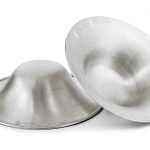
In this article we will find out what breast fissures are, how breast fissures are prevented and, if they arise, how they are treated.
Sommario
What are breast fissures
Breast fissures are more or less deep cuts that form on the nipple when a woman is breastfeeding. They arise due to the rubbing that occurs between the nipple and the baby’s lips and tongue as she/he sucks the milk.
Nipple fissures are a source of pain for the nursing mother. It is a pain that becomes very intense when the baby latches on to the breast and often prevents breastfeeding altogether.
When breast fissures appear
Breast fissures appear in the first weeks of breastfeeding and initially have the appearance of cracks. Breast fissures are more common in women with flat nipples or long, thick nipples who have babies with a mouth that is too small with poor muscle tone that prevents the baby from using the tongue properly or in the presence of breast edema that makes the nipple hard and swollen.
Symptoms of breast fissures
The main symptom of breast fissures is temporary discomfort which, however, tends to disappear spontaneously after a few days. However, they can worsen to the point of bleeding, especially during breastfeeding. In this case, the risk of breast infections and inflammation (mastitis) is high.
Remedies for breast fissures
Breast fissures can not only be treated, but they can be prevented. A key role in prevention is given by the Silverette the original silver nipple shields. They are worn at the end of the feeding under the bra, making them adhere with a drop of milk. They are available in two sizes, to adapt to the different sizes of the areoles and made of solid 925 silver to avoid any allergy problem.
The nipple shields are also useful when the fissures have already formed, effectively protecting the nipple and creating the ideal environment for the healing process.
Useful tips to defeat breast fissures
Use Silverette silver nipple shields from the very first days in the hospital.
Before and after feeding, squeeze a little milk on the nipples to soften them because breast milk is rich in nutrients, healing substances and antibodies and works better than many creams.
If the breast hurts, you can apply wet and warm towels or gauze to the areas where the pain is felt for 15-30 minutes, then dry gently.
For breastfeeding, look for a comfortable position, whether lying down, slightly reclined, or sitting, with a pillow behind the back and one or more pillows on the legs, so that you are not:
- forced to bend over the child but maintain a correct posture;
- the baby’s head must be turned towards the breast and the neck must not be turned;
- ake sure that the baby’s mouth covers not only the nipple, but the entire areola.



